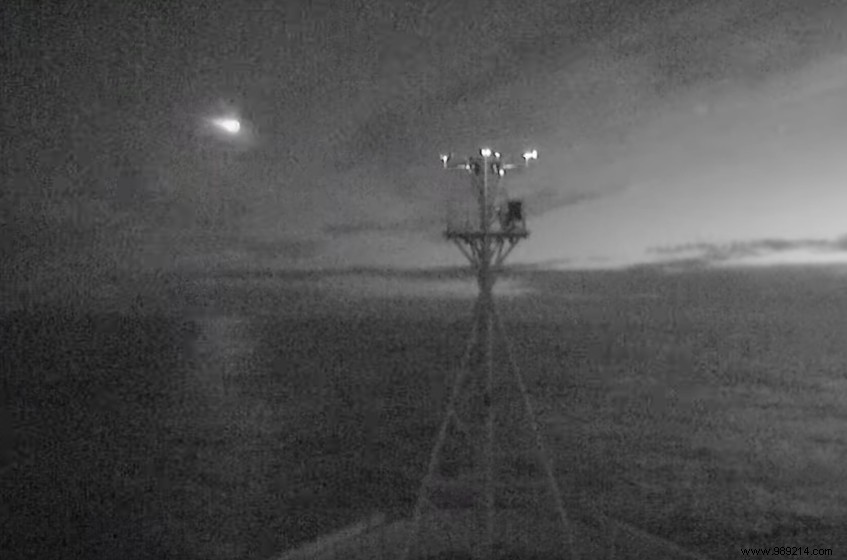Recently, a ship captured some impressive live footage as it captured the fall of a meteor in the Southern Ocean, south of Tasmania, Australia. As it fell, the object generated a translucent flash of sunlight piercing the sky.
On November 18, 2020, the liner RV Investigator was sailing near Tasmania (Australia). This vessel belonging to the Commonwealth Scientific and Industrial Research Organization (CSIRO) was on a mission. As an official press release from the organization explains, its objective was to map the seabed , in particular with the help of a continuously operating camera.
At 9:30 p.m. the ship filmed live the fall of a meteor near the coast about 120 km south of Hobart, the provincial capital. The coincidence of the moment caused the object to generate a translucent flash of sunlight piercing the sky. For captain John Hooper, having immortalized this moment live is a real stroke of luck . The interested party also indicated that the size and luminosity of the meteor were incredible.

For Glen Nagle of CSIRO Astronomy and Space Science, looking at such images is exciting and a reminder that space is far from empty. The interested party also recalled that approximately one hundred tons of natural space debris enter the Earth's atmosphere every day. On the other hand, most of it remains invisible, because this debris ends up in unpopulated areas, like the Southern Ocean here. The expert also pointed out that when a meteor enters the Earth's atmosphere at high speed, the friction of the rock with the atmosphere causes it to burn. However, it turns out that many meteors were once asteroids traveling through space on their own path. Nevertheless, everything changes at the moment of the encounter with the Earth. By experiencing the gravitational pull of our planet, asteroids are drawn towards the atmosphere and become meteors, whose entry can be spectacular.
At the end of September 2020, a meteor had also “bounced” off the Earth’s atmosphere. According to the Global Meteor Network, the object hovered over Germany and the Netherlands at an altitude of about 91 kilometers before heading back into space. According to the researchers, the meteor did not penetrate the atmosphere sufficiently to be able to burn and its entry angle was also very low compared to the horizon. In addition, the object was traveling at 34.1 km/s while the escape speed from Earth is 11.2 km/s. Thus, the rock was moving fast enough to get rid of the gravitational pull of our planet.
Here are the CSIRO images relayed by the India Meteor Observation Network: